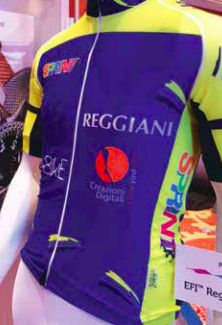 Textile printing is different than other types of printing, as are the workflows that support them all. While screen printing and rotary screen printing have been the stable main print technologies, the workflow elements have evolved continuously to support the needs of brands and designers, and the adoption of digital innovations.
Textile printing is different than other types of printing, as are the workflows that support them all. While screen printing and rotary screen printing have been the stable main print technologies, the workflow elements have evolved continuously to support the needs of brands and designers, and the adoption of digital innovations.
In our last blog post, we discussed the different components of the digital textile workflow, but we must also understand the business side of these operations, and how they are impacted in the process.
The Business of Digital Textile Printing
There are many cost models related to digital print production. First, your equipment will have a different operating profile from your conventional devices, so you should carefully consider how you amortize your equipment and your maintenance expenses. Digital devices should be run every day, even if you do not have paid work, so building in costs associated with running the machine and consumables to support those print runs should be part of the calculations.

The London College of Fashion Costume School was charged with creating costumes with a “Blade Runner” theme
using digital textiles. They did the pattern designs, arranged for printing with volunteer digital textile printers like
CYMUK and created the final costumes. They opened IPEX each day and gave presentations on the process in
the Print in Action theatre at the show. (Image courtesy of IPEX 2017.)
Consumables for digital equipment also have different cost profiles, which should prompt a review of total cost of production for digital work and new calculations for margins.
If you are currently printing and finishing using traditional technology, digital printing will have a positive impact on your environmental impact. Digital print technology requires less water and less energy for drying and washing.
You must also make a clear distinction between conventional and digital production costs and inform your employees of those differences to ensure appropriate margins are established.
Be sure to consider how your pricing model will be impacted, because digital work can often be used to add premiums for short run work, highly customized work and short turnaround work.
There is a long list of business-related details that must be considered when adopting digital textile printing, as these considerations could drastically influence your pricing and staffing plans as well as throughput estimations.
Read more in the SGIA Garment Journal Spring 2018.